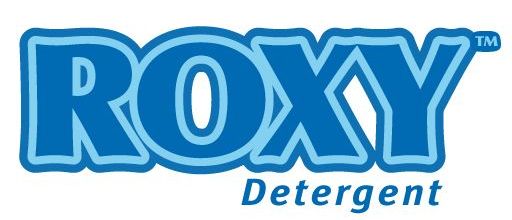
Milling
Sugarcane first has to be moved to a mill which is usually located close to the area of cultivation. Small rail networks are a common method of transporting the cane to a mill.Once the factories acquire the cane it will be subjected to the quality test. In Sri Lanka cane will be evaluated according to the brix and trash percentage.
In a sugar mill, sugarcane is washed, chopped, and shredded by revolving knives. The shredded cane is repeatedly mixed with water and crushed between rollers; the collected juices (called garapa in Brazil) contain 10–15 percent sucrose, and the remaining fibrous solids, called bagasse, are burned for fuel. Bagasse makes a sugar mill more than self-sufficient in energy; the surplus bagasse can be used for animal feed, in paper manufacture, or burned to generate electricity for the local power grid.
The cane juice is next mixed with lime to adjust its pH to 7. This mixing arrests sucrose's decay into glucose and fructose, and precipitates out some impurities. The mixture then sits, allowing the lime and other suspended solids to settle out, and the clarified juice is concentrated in a multiple-effect evaporator to make a syrup about 60 percent by weight in sucrose. This syrup is further concentrated under vacuum until it becomes supersaturated, and then seeded with crystalline sugar. Upon cooling, sugar crystallizes out of the syrup. A centrifuge is used to separate the sugar from the remaining liquid, or molasses. Additional crystallizations may be performed to extract more sugar from the molasses; the molasses remaining after no more sugar can be extracted from it in a cost-effective fashion is called blackstrap.
Raw sugar has a yellow to brown colour. If a white product is desired, sulfur dioxide may be bubbled through the cane juice before evaporation; this chemical bleaches many color-forming impurities into colourless ones. Sugar bleached white by this sulfitation process is called "mill white", "plantation white", and "crystal sugar". This form of sugar is the form most commonly consumed in sugarcane-producing countries. Traditionally, sugarcane has been processed in two stages. Sugarcane mills, located in sugarcane-producing regions, extract sugar from freshly harvested sugarcane, resulting in raw sugar for later refining, and in "mill white" sugar for local consumption. Sugar refineries, often located in heavy sugar-consuming regions, such as North America, Europe, and Japan, then purify raw sugar to produce refined white sugar, a product that is more than 99 percent pure sucrose. These two stages are slowly becoming blurred. Increasing affluence in the sugar-producing tropics has led to an increase in demand for refined sugar products in those areas, where a trend toward combined milling and refining has developed.
[edit] Refining
The Santa Elisa sugarcane processing plant, one of the largest and oldest in Brazil, is located in Sertãozinho, Brazil.
Evaporator with baffled pan and foam dipper for making ribbon cane syrup. Three Rivers Historical Society Museum at Browntown, South Carolina
In sugar refining, raw sugar is further purified. It is first mixed with heavy syrup and then centrifuged clean. This process is called 'affination'; its purpose is to wash away the outer coating of the raw sugar crystals, which is less pure than the crystal interior. The remaining sugar is then dissolved to make a syrup, about 70 percent by weight solids.
The sugar solution is clarified by the addition of phosphoric acid and calcium hydroxide, which combine to precipitate calcium phosphate. The calcium phosphate particles entrap some impurities and absorb others, and then float to the top of the tank, where they can be skimmed off. An alternative to this "phosphatation" technique is 'carbonatation,' which is similar, but uses carbon dioxide and calcium hydroxide to produce a calcium carbonate precipitate.
After any remaining solids are filtered out, the clarified syrup is decolorized by filtration through a bed of activated carbon; bone char was traditionally used in this role, but its use is no longer common. Some remaining colour-forming impurities adsorb to the carbon bed. The purified syrup is then concentrated to supersaturation and repeatedly crystallized under vacuum, to produce white refined sugar. As in a sugar mill, the sugar crystals are separated from the molasses by centrifuging. Additional sugar is recovered by blending the remaining syrup with the washings from affination and again crystallizing to produce brown sugar. When no more sugar can be economically recovered, the final molasses still contains 20–30 percent sucrose and 15–25 percent glucose and fructose.
To produce granulated sugar, in which the individual sugar grains do not clump together, sugar must be dried. Drying is accomplished first by drying the sugar in a hot rotary dryer, and then by conditioning the sugar by blowing cool air through it for several days.
Ribbon cane syrup
Ribbon cane is a subtropical type that was once widely grown in southern United States, as far north as coastal North Carolina. The juice was extracted with horse or mule-powered crushers; the juice was boiled, like maple syrup, in a flat pan, and then used in the syrup form as a sweetener for other foods. It is not a commercial crop nowadays, but a few growers try to keep alive the old traditions and find ready sales for their product. Most sugarcane production in the United States occurs in Florida and Louisiana, and to a lesser extent in Hawaii and Texas.




Aucun commentaire:
Enregistrer un commentaire